I have a df with multiple y-series which I want to plot individually, so I wrote a fn that selects one particular series, assigns to a local variable dat, then plots it. However ggplot/geom_step when called inside the fn doesn't treat it properly like a single series. I don't see how this can be a scoping issue, since if dat wasn't visible, surely ggplot would fail?
You can verify the code is correct when executed from the toplevel environment, but not inside the function. This is not a duplicate question. I understand the problem (this is a recurring issue with ggplot), but I've read all the other answers; this is not a duplicate and they do not give the solution.
set.seed(1234)
require(ggplot2)
require(scales)
N = 10
df <- data.frame(x = 1:N,
id_ = c(rep(20,N), rep(25,N), rep(33,N)),
y = c(runif(N, 1.2e6, 2.9e6), runif(N, 5.8e5, 8.9e5) ,runif(N, 2.4e5, 3.3e5)),
row.names=NULL)
plot_series <- function(id_, envir=environment()) {
dat <- subset(df,id_==id_)
p <- ggplot(data=dat, mapping=aes(x,y), color='red') + geom_step()
# Unsuccessfully trying the approach from http://stackoverflow.com/questions/22287498/scoping-of-variables-in-aes-inside-a-function-in-ggplot
p$plot_env <- envir
plot(p)
# Displays wrongly whether we do the plot here inside fn, or return the object to parent environment
return(p)
}
# BAD: doesn't plot geom_step!
plot_series(20)
# GOOD! but what's causing the difference?
ggplot(data=subset(df,id_==20), mapping=aes(x,y), color='red') + geom_step()
#plot_series(25)
#plot_series(33)